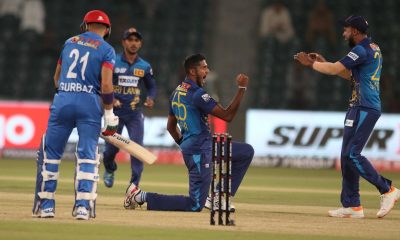
In the next three years, cricket will crown three champions. Later this year the ODI World Cup plays out in England, in 2020 the T20 World Cup will be in Australia and in 2021 the inaugural Test Championship will end with its first champion at Lords.
The International Cricket Council have responded to calls for a greater context in bilateral cricket by introducing the Test Championship as well as an ODI league, which is set to follow the Test Championship, but now the concern is that they may be overdoing it.
We know from other sports that annual events like the Super Rugby tournament and football’s UEFA Champions League generate plenty of interest, but the concern for cricket is that in adding greater context the game may be closing off to fringe nations.
A quick glance at the schedules of the Test team’s not included in the Test championship seems so show that even some nations already welcomed into the game’s elite could be struggling for survival – and the right to compete against the best in the game.
Afghanistan, Ireland and Zimbabwe will continue to play Test cricket through this period, but their matches will not count towards the Test Championship, with the structure only allowing for nine nations to compete.
Cricket’s multiple formats will now all have their own tournament to decide a champion, but where does the ODI League fit into all this? The 2017 Champions Trophy looks to be the last iteration of that tournament for sure, but even without the secondary ODI tournament, the ICC’s attempts to add context to bilateral ODI cricket could detract from the value of the quadrennial World Cup.
The ODI League runs the risk of becoming like the current Test Championship, which is run on a rankings system and has become little more than a nicety. Alternatively, if it takes off, it could render the World Cup pointless.
The inaugural league will serve as a prolonged and glorified qualifying tournament for the 2023 World Cup in India. It will feature the 12 Test-playing nations and the Netherlands and see each participant playing against eight of the other nations in the league; it will run from 2021 until 2023.
The convoluted system and lack of any real stakes, especially for the big boys, could see the league do little to add value to bilateral ODI cricket over the period. The Netherlands will get to test themselves against cricket’s elite, but during that same period their fellow associates Scotland, the United Arab Emirates and Nepal – who are all good candidates for future full membership – will be left out in the international wilderness with no route to the game’s elite competition.
Giving out awards and titles to the game’s elite nations is unlikely to give the game the kind of growth it craves, but that is all that is likely to be achieved by the ICC’s great shake-up.
The ICC, meanwhile, are putting all their eggs into the T20I basket. They are hoping the natural expansion of the shorter format and blanket international status for all members will drive up numbers and break open new frontiers while restricting access to ODI and Test cricket under the guise of maintaining standards.
The current structure is not set in stone just yet, but it is unlikely the ICC will be dissuaded from their current course.
By 2021, there will be a clear champion in every format, but clarity is no guarantee of popularity – and the massive amount of cricket played by top nations could see the best players moving out of the international arena and into the arms of domestic T20 leagues.


































